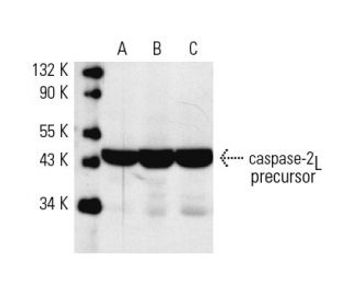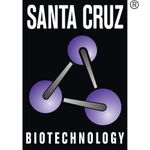Santa Cruz Biotechnology is a world leader in the development of products for the biomedical research market. Over the past 30+ years, the Company has focused on the ongoing development of research antibodies, siRNA and CRISPR Gene editing tools, biochemicals, labware and more recently has expanded into animal health care products. Santa Cruz Biotechnology has the highest commitment to quality and customer service.

caspase-2L (F-7) Alexa Fluor® 647 | Santa Cruz Biotechnology
mouse monoclonal IgG1; caspase-2L Antibody (F-7) is an IgG1 κ mouse monoclonal caspase-2L antibody that detects p13 subunit, caspase-2L and full length caspase-2 precursor of mouse, rat and human origin by WB, IP, IF and ELISA. caspase-2L Antibody (F-7) is available as the non-conjugated anti-caspase-2L antibody form, as well as multiple conjugated forms of anti-caspase-2L antibody, including agarose, HRP, PE, FITC and multiple Alexa Fluor® conjugates. Caspase-2 (Nedd2, Ich-1) is an aspartate-specific cysteine protease that is activated in response to various apoptotic stimuli. Caspase-2 is unique among the caspases in that it has features of both upstream caspases (long prodomain) and downstream caspases (DEXD substrate specificity). Caspase-2 is highly expressed in the brain during development, and is expressed at low levels in adult tissue. Specifically, caspase-2 localizes to the mitochondria, the Golgi, the cytoplasm, and the nucleus. Caspase-2 exists as two isoforms, caspase-2L and caspase-2S, which are produced by alternative splicing and differ in their N and C-termini. Caspase-2L acts as a positive regulator of apoptosis, whereas caspase-2S functions as a negative regulator of apoptosis. Following apoptotic stimuli, the caspase-2L precursor undergoes cleavage at Asp 153 to produce a fragment p30. The p30 fragment undergoes further cleavage to generate a fragment containing amino acids 153-308 (p18) and a fragment containing amino acids 317-435 (p13 or p14). As apoptosis progresses, the p13 (p14) fragment can undergo further processing to yield a fragment containing amino acids 331-435 (p12).




























































